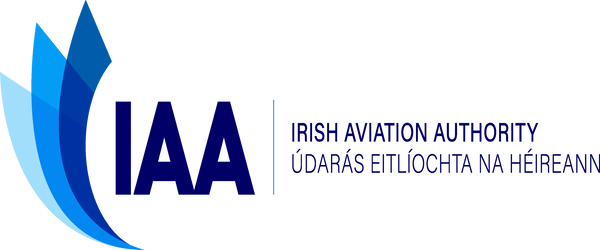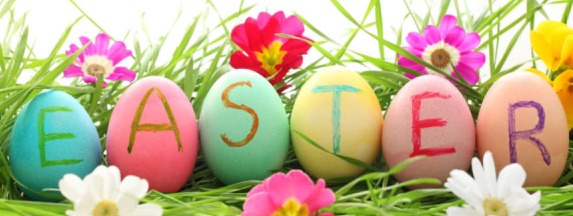
Easter in Ireland is celebrated with Easter Holidays, Easter Eggs and even a visit from the Easter Bunny !
Easter takes its name from the pagan goddess of spring ‘Eostre’ and many of the traditional Easter icons were originally Anglo Saxon fertility symbols. The Irish have welcomed these symbols and celebrate Easter with chocolate Easter Eggs , Egg Hunts and Easter Egg painting in similar fashion, while the streets are often decked with green and yellow.
After the cold bleak Irish winter , Easter is a sign that the summer is around the corner and the dark evenings are replaced by the bright long days. Most people observe Easter whether they are religious or not and see it as a nice juncture in the year to gather friends and family together – perhaps for the first time since the Christmas Holidays.
For most though, the religious significance of Easter is widely celebrated and Catholic tradition is more strictly adhered to than in some other countries. Irish Easter tradition stems from the Christian view of Easter as the time of Christ’s Resurrection. As with most predominantly Catholic countries this period begins with the 40 days leading up to Easter Sunday, known as Lent. This time begins with Ash Wednesday, when the faithful are anointed with ashes and during Lent people are required to give something up as an act of penance for children this usually means sweets and chocolate . The Sunday before Easter is Palm Sunday, when palm leaves are hung to mark Christ’s entrance into Jerusalem and the Friday before is Good Friday.
On Good Friday, the day Christ died, you’ll find everywhere is closed in Ireland. The day is a Bank Holiday, the banks, schools, businesses and even the pubs are all closed! People don’t eat meat on Good Friday and traditionally people in Ireland would go barefoot on this day. Many ate nothing until midday, no wood was to be burned, no nails were driven and no animals were slaughtered on this day.
But come Easter Sunday, everyone is out celebrating, Christ is risen, Lent is over and the pubs are open! Many towns and villages hold processions of some sort, while out in the countryside, Easter Sunday is usually a high point of the social calendar with events such as fairs and horse races packing out the pubs. And as the following Monday is also a Bank Holiday, you don’t have to worry about work in the morning.
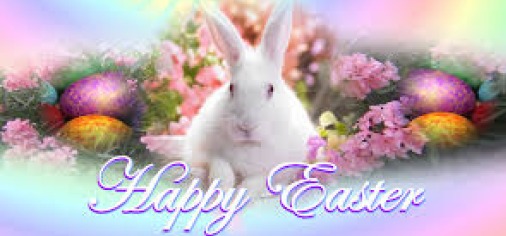
Easter Bunny :
Over the years we have adopted a few traditions from other countries such as the Easter Bunny and Easter egg hunts . These have become more popular in recent years here in Ireland even though they date back hundreds of years. The Easter bunny has its origin in pre-Christian fertility lore. The Hare and the Rabbit were the most fertile animals known and they served as symbols of the new life during the Spring season. The bunny as an Easter symbol seems to have it’s origins in Germany, where it was first mentioned in German writings in the 1500s. The first edible Easter bunnies were made in Germany during the early 1800s. These were made of pastry and sugar. The Easter bunny was introduced to American folklore by the German settlers who arrived in the Pennsylvania Dutch country during the 1700s. The arrival of the “Oschter Haws” was considered “childhood’s greatest pleasure” next to a visit from Christ-Kindel on Christmas Eve. The children believed that if they were good the “Oschter Haws” would lay a nest of colored eggs. The children would build their nest in a secluded place in the home, the barn or the garden. Boys would use their caps and girls their bonnets to make the nests .
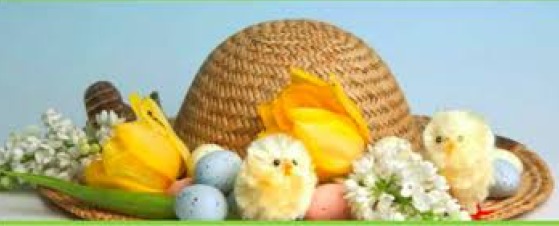
Easter Bonnets:
Another popular tradition over the years was the Easter Bonnet and we have fond memories of making elaborate Easter Bonnets for competitions in school and parish halls . These were fierce competitive and people would have spent many days working on the bonnets in the hope to bring home the title. It might be unusual to wear a bonnet now, but Easter bonnets date from a time when most women wore hats of some kind. Irving Berlin wrote about a woman wearing a Easter bonnet in an Easter parade, bringing the hat into popular culture. In New York, well-off women would show off their hats at the parade, which inspired Berlin’s description.
It is a tradition to wear new clothes at Easter, and this hat ties into this idea, as women and girls could purchase a new hat to wear at church on Easter Sunday. In post Civil War America, women swapped their mourning veils for the bright hats. Nowadays, children often make such bonnets at school.
In New York City, the Easter Parade tradition dates back to the mid-1800s, when the upper crust of society would attend Easter services at various Fifth Avenue churches then stroll outside afterward, showing off their new spring outfits and hats. Average citizens started showing up along Fifth Avenue to check out the action. The tradition reached its peak by the mid-20th century, and in 1948, the popular film Easter Parade was released, starring Fred Astaire and Judy Garland and featuring the music of Irving Berlin. The title song includes the lyrics: “In your Easter bonnet, with all the frills upon it/You’ll be the grandest lady in the Easter parade.”
The Easter Parade tradition lives on in Manhattan, with Fifth Avenue from 49th Street to 57th Street being shut down during the day to traffic. Participants often sport elaborately decorated bonnets and hats. The event has no religious significance, but sources note that Easter processions have been a part of Christianity since its earliest days. Today, other cities across America also have their own parades.
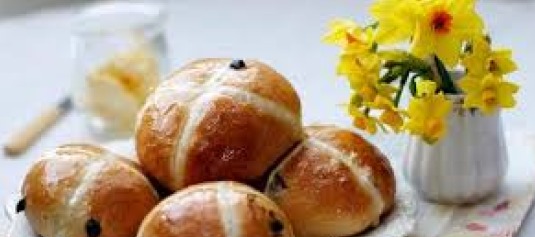
Hot cross buns:
For the uninitiated, hot cross buns are sweet, raisin-filled yeasty buns which are marked with a cross on top. The pastry cross on top of the buns symbolises the cross which Jesus was killed on. The buns were traditionally eaten at breakfast time on Good Friday, hot from the oven.
Here are some old Easter traditions :
Before Easter
The house had to be cleaned and white-washed – usually in preparation for the inevitable visiting of friends and family but also for when the priest came to bless the home.
Good Friday
No alcohol could be sold on this day and this is still true today . On this day all pubs remain closed, while restaurants do open up – alcohol is off the menu. Baked bread would be marked with a cross. Some people would remain silent all or part of the day. Fasting was common on this day too. It was thought that Good Friday was a lucky day to plant crops. People would visit graves or holy wells.
Easter Saturday
Eggs were usually painted on this day in preparation for the following day. Get water blessed by the priest and then take 3 sips and sprinkle around your home and processions for good luck for the year ahead. Some families asked for ashes for the fire to be blessed instead of water – with the blessed ashes sprinkled around the house for luck.
Easter Sunday
Easter Sunday in many homes is very similar to any other Sunday or religious day in Ireland. Families get together dressed in their new clothes and would attend mass together in their local church. After attending mass on Easter Sunday everyone would make their way back home to start the Easter feast which is usually made up of servings of potatoes, vegetables, meat, stuffing, bread and anything else that makes up a good proper Irish feast.
The Easter Eggs are always presented to the Children after their traditional Irish Easter dinner and can only be given to a child that has not broken the Lent fast and who has also finished eating a full Easter Dinner but from part experience parents usually bend the rules for the children as the fasting is somewhat of a difficult task for a child.
